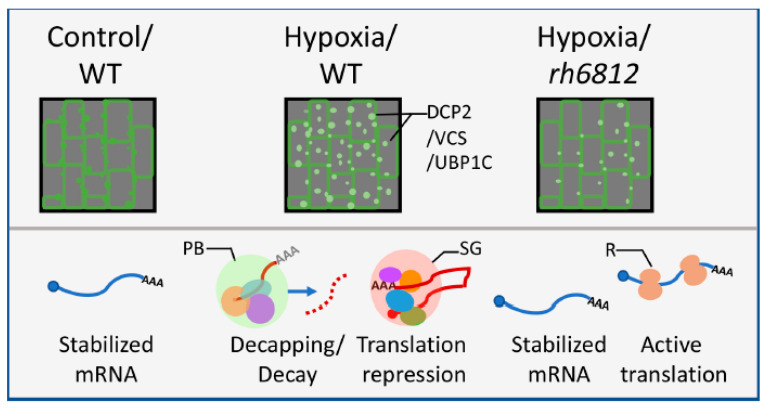Figure 3.
The dynamics and functions of p-bodies and SGs are regulated by RNA helicases. The numbers of p-bodies (marked by DCP2 or VCS) and SGs (marked by UBP1C) increased in response to coverslip-induced hypoxia in Arabidopsis root epidermal cells, a process requiring specific RNA helicases (RHs) [48]. Note the reduction of cytoplasmic granules in rh6812 triple mutant under coverslip-induced hypoxia. The induction of these RNA granules was correlated with selective mRNA decay and translation repression. For each subfigure, the upper panel illustrates the localization of SGs within wild-type cells/tissues under mock (control) or hypoxia conditions and the rh6812 mutant under hypoxia condition. The lower panels are graphical representations of mRNA destinies in the corresponding cells/tissues. WT: wild-type Arabidopsis; DCP2/VCS/UBP1C: DCP2-GFP, VCS-GFP, or UBP1C-GFP focus. PB: p-body; SG: stress granule; R: ribosome.

